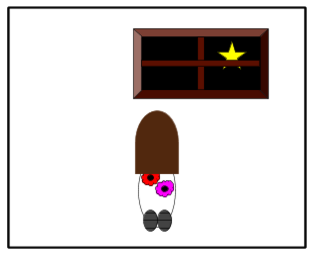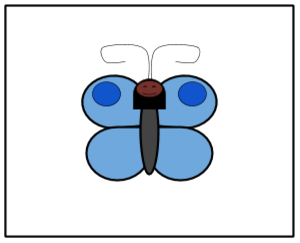Formally stated, Newton’s third law of motion is: For every action, there is an equal and opposite reaction. This law can easily be applied to everyday life. If we lived in a world with a sun never hidden from us, by storm clouds or other means, we would be incapable of knowing what a “clear” day is. To us, it would just be “A Day,” indifferent to us and everything else. In Brave New World, there is a civilized society in which no one experiences sadness. They are civilized, and they are happy, therefore they experience civilized happiness. What of the rest of us? I experience both sadness and happiness; in some instances, the emotion is so strong I forget I am capable of feeling the other. Experiencing sadness is the prerequisite to gratitude. We need opposing forces in our lives. Happiness is one thing, but gratitude for that happiness is arguably more important than the emotion itself. This is called savage happiness.
Brave New World defines individual happiness by the ability to satisfy needs. Whether the need be physical, mental, or sexual, any and all needs are instantaneously met with easy solutions such. It sounds like the perfect situation but the question still arises, is it genuine? To achieve this, all the civilized humans sacrificed their ability to recognize beauty, to feel love, to know God. Surviving while remaining “happy” is what they do. That is not real living. We live through experience, not by satisfying our needs. We need the struggle in order to recognize peace. It’s all a balance between opposing forces, one constant force is impossible. We can’t be grateful if we don’t have a reason to be.
Aldous Huxley’s Brave New World defines communal happiness by the ability to achieve perfection. Perfection is the condition of being as free as possible from all flaws and defects. They accomplish this by sacrificing families, mothers, fathers, instead fertilizing eggs in tubes and pre-determining the life of each individual. This makes life more efficient, because children are raised and conditioned by the state, eliminating all conflict that is derived from opinion, because everyone has the same opinions on everything. However, in our world we think for ourselves, we have original thoughts, and that is unquestionably a better way of living. Conflict can be healthy in terms of debates and constructive criticism, one person’s idea of “perfection” eliminating these things all together. We can’t be grateful if we don’t have conflict to remind us to be grateful.
The balance that we need and rely on so much is not present in Brave New World. We are savage, and this savagery is defined as uncivilized, both in the novel Brave New World and in our world. The novel goes on to define a savage as someone who accepts the right to be unhappy, the right to have cancer, the right to love and be loved, the right to be “one of us,” so to speak. We have the right to be savage, however in Brave New World, it is only a privilege. We are allowed to have science, to have Newton’s laws which in turn apply to every aspect of living. So yes, our world isn’t brave, isn’t new, but it’s real, and it’s savage. We are all savages following Newton’s laws of motion by feeling happiness, sadness, and a plethora of other emotions that don’t even have names. Our individual ability to experience life is much more valuable than ever-lasting happiness, more valuable than perfection. We all experience savage happiness, and we should hope that that doesn’t change.







 Mother knows best, that’s what everyone always says, but when your mother thinks she should sell you as a slave because your dad died, maybe Grandmother knows best. Malinalli’s abuela remained her sanity, her happiness. She saw at the start of Malinalli’s life that she would be a survivor for the rest of her time, as she “sensed that the girl was destined to lose everything so that she might gain everything.,” on page 5. Her grandmother saw even more without the use of her eyes, and she was right when she saw that Malinalli would experience great losses in order to experience true happiness. Malinalli’s first loss was her freedom, but she survived with the help of her gods, and the morning star. “From the time they had first given her away as a very young girl, Malinalli had learned to conquer the fear of the unknown by relying on the familiar, on the brilliant star that would appear at her window…” It is evident page 19 that after experiencing loss, Malinalli can gain the skills to survive it, and she often times already has the skills thanks to her all-knowing abuela.
Mother knows best, that’s what everyone always says, but when your mother thinks she should sell you as a slave because your dad died, maybe Grandmother knows best. Malinalli’s abuela remained her sanity, her happiness. She saw at the start of Malinalli’s life that she would be a survivor for the rest of her time, as she “sensed that the girl was destined to lose everything so that she might gain everything.,” on page 5. Her grandmother saw even more without the use of her eyes, and she was right when she saw that Malinalli would experience great losses in order to experience true happiness. Malinalli’s first loss was her freedom, but she survived with the help of her gods, and the morning star. “From the time they had first given her away as a very young girl, Malinalli had learned to conquer the fear of the unknown by relying on the familiar, on the brilliant star that would appear at her window…” It is evident page 19 that after experiencing loss, Malinalli can gain the skills to survive it, and she often times already has the skills thanks to her all-knowing abuela. As La Malinche travels to Tenochtitlan, silent and uncomplaining, she uses her survival skills, and draws out Malinalli from her soul. “Migration is an act of survival,” that is what Malinalli’s grandmother said to her when admiring butterflies on page 92. Malinalli remembers this when she needs it most, when she is suffering from hypothermia and is about to witnesses horrible death. Malinalli is always migrating, be it from slave owner to slave owner, or with Cortes, conquering alongside him. She becomes one of the butterflies her abuela took her to see, changing names, creating cocoons for herself, born into a new life each time, surviving. Migrating involves leaving everything behind, or as her abuela predicted, losing everything, leaving behind a life, in turn for eventually, a better one.
As La Malinche travels to Tenochtitlan, silent and uncomplaining, she uses her survival skills, and draws out Malinalli from her soul. “Migration is an act of survival,” that is what Malinalli’s grandmother said to her when admiring butterflies on page 92. Malinalli remembers this when she needs it most, when she is suffering from hypothermia and is about to witnesses horrible death. Malinalli is always migrating, be it from slave owner to slave owner, or with Cortes, conquering alongside him. She becomes one of the butterflies her abuela took her to see, changing names, creating cocoons for herself, born into a new life each time, surviving. Migrating involves leaving everything behind, or as her abuela predicted, losing everything, leaving behind a life, in turn for eventually, a better one.  The better life, the one The Tongue was always translating for, the one La Malinche helped Cortes for, the one Malinalli finally got, with Jaramillo, her husband, and Maria and Martin. It is this life that Malinalli finally, once again herself as she was as a child, allowed herself to die in. This life, finally full of all the happiness she lost, is the one that allowed Malinalli to be one with the gods, the elements, the stars. “Her spirit became one with the water. It scattered in the air. Her skin expanded to the limit, allowing her to change shape and become one with everything that surrounded her…She abandoned this world.” Only a survivor can avoid death for so long, then to choose when they do leave world, as Malinalli did on page 185.
The better life, the one The Tongue was always translating for, the one La Malinche helped Cortes for, the one Malinalli finally got, with Jaramillo, her husband, and Maria and Martin. It is this life that Malinalli finally, once again herself as she was as a child, allowed herself to die in. This life, finally full of all the happiness she lost, is the one that allowed Malinalli to be one with the gods, the elements, the stars. “Her spirit became one with the water. It scattered in the air. Her skin expanded to the limit, allowing her to change shape and become one with everything that surrounded her…She abandoned this world.” Only a survivor can avoid death for so long, then to choose when they do leave world, as Malinalli did on page 185.



